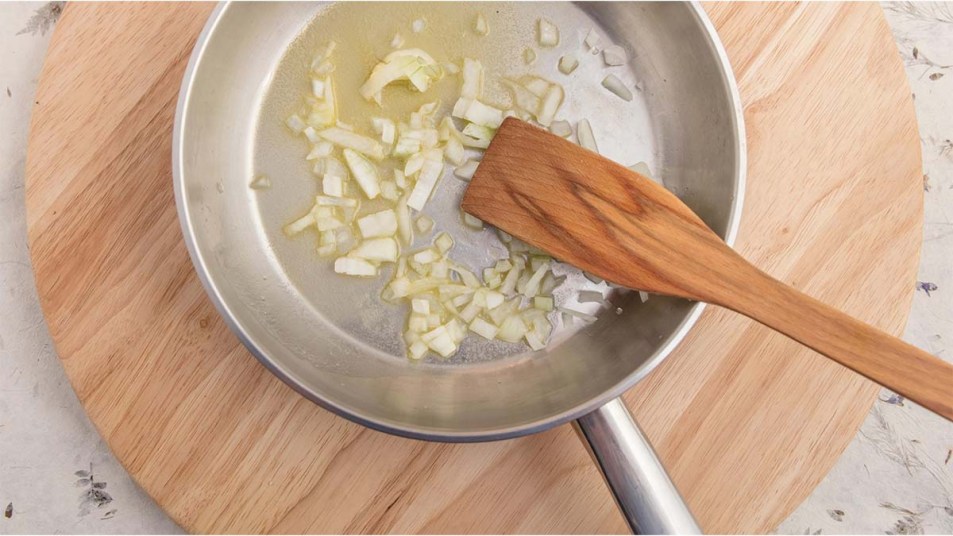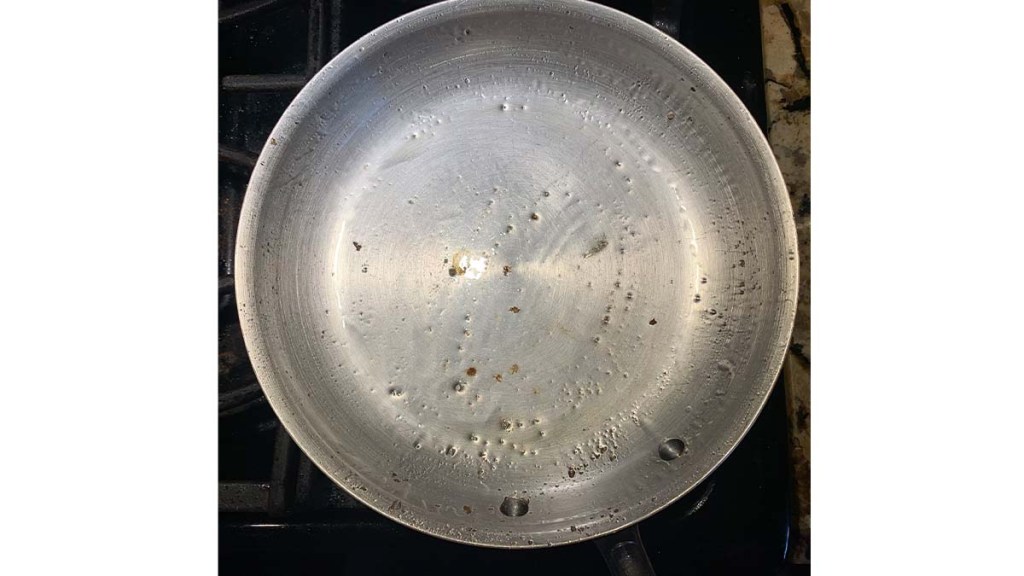Why Does Food Stick to Your Stainless Steel Pans? (And an Easy Way to Avoid It)

When I was younger, I loved watching chefs like Ina Garten and Guy Fieri whip up tasty meals in their signature stainless steel skillets. Fast forward to today, and I finally have a set of these pans. I am in love with their shiny yet durable surface.
One downside? Foods like fried eggs or pan-seared meats and fish are prone to sticking to the pan’s surface. Recently, I haven’t had that problem, thanks to a simple water droplet trick. It helps ensure that food doesn’t stick to my beloved stainless steel pans!
Why does food stick to my stainless steel pans?
Surprisingly, the answer to why food tends to stick to a stainless steel pans lies beneath its seemingly smooth surface.
According to the cookware experts at Heritage Steel, the surface of stainless steel is slightly porous on a microscopic level. As it heats up, the steel expands and those tiny pores on the surface begin shrinking.
Food is more likely to stick because it “gets pinched” by contracting pores during the cooking process. This often results in a sticky mess that requires you to scrub and soak the pan to get it thoroughly clean.
How do you cook with stainless steel pans without the food sticking?
As Heritage Steel notes, the key to cooking food in a stainless steel pain without any sticking is to maintain a fairly consistent temperature.
Luckily, the culinary experts at Misen have a quick way to properly preheat the pan on their TikTok (@misenkitchen). This handy trick helps ensure that the pan stays at a steady temperature from start to finish.
- Place the pan over medium heat for about a minute and a half.
- Spoon a few drops of water into the skillet.
- You’ll know the pan is fully preheated when the water forms a slippery bead that glides around the pan. This fascinating phenomenon is called the “Leidenfrost effect.”
If the water fizzles and evaporates, that’s a sign that the pan isn’t hot enough yet. Let it heat over a medium flame for an additional minute before checking again.
If the droplet splits into a bunch of tiny beads when it hits the pan, the pan is too hot. Take the pan off the burner for two minutes and reduce the heat to a low flame to let it cool down.
Watch Misen’s video below to learn more about this easy water droplet test!
@misenkitchen Prevent food from sticking to your stainless steel pan with this foolproof pre-heating method. #howto #stainlesssteel #cooking #Misen #tips #cookinghacks #cookingtips
♬ original sound – Misen
Trying Out This Hack for Myself
After coming across Misen’s quick tutorial, I immediately tested out this hack on a fried egg.
Following the video’s steps, I found that my pan wasn’t hot enough initially — the droplets of water fizzled and dissipated after I added them. So, I gave the pan an extra minute to sit on the medium flame before trying again.
The second time around, the water formed a single droplet and slid over the pan’s surface without fizzling out (a success!).
From there, I cooked my fried egg as I normally do. I saw fewer bits of food left behind on the pan — making the cleaning process much easier than before.

While this trick seems like an additional, time-consuming step — especially when you’re in a rush — it’s completely worth it. For me, that extra minute it takes to thoroughly preheat my stainless steel skillet gives me more time to prep veggies, meat, or fish.
Plus, my favorite dishes like sautéed chicken breasts and pan-fried potatoes can now achieve crispy, golden brown perfection — no messy clean up required!












